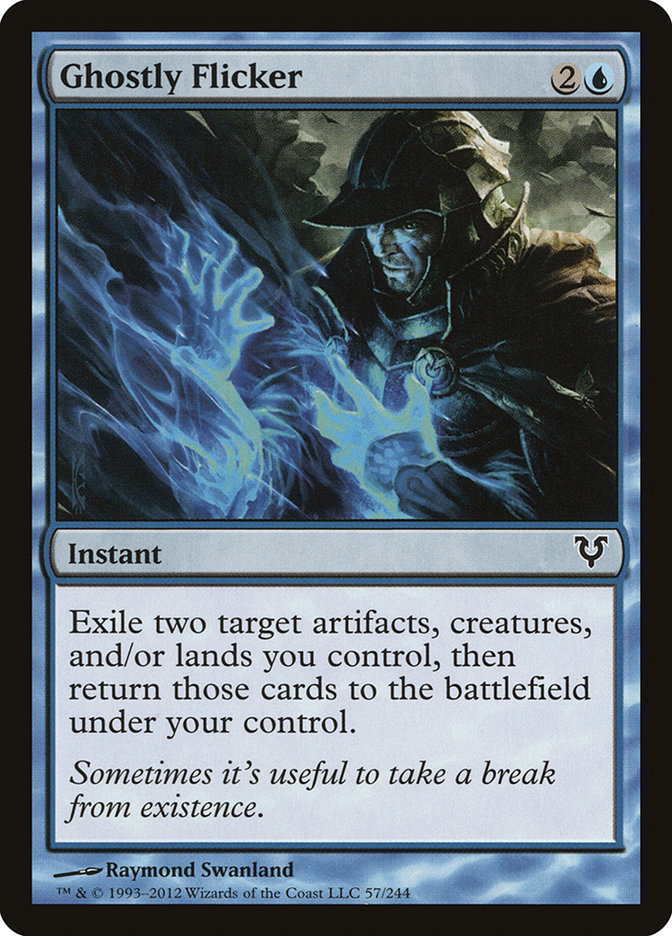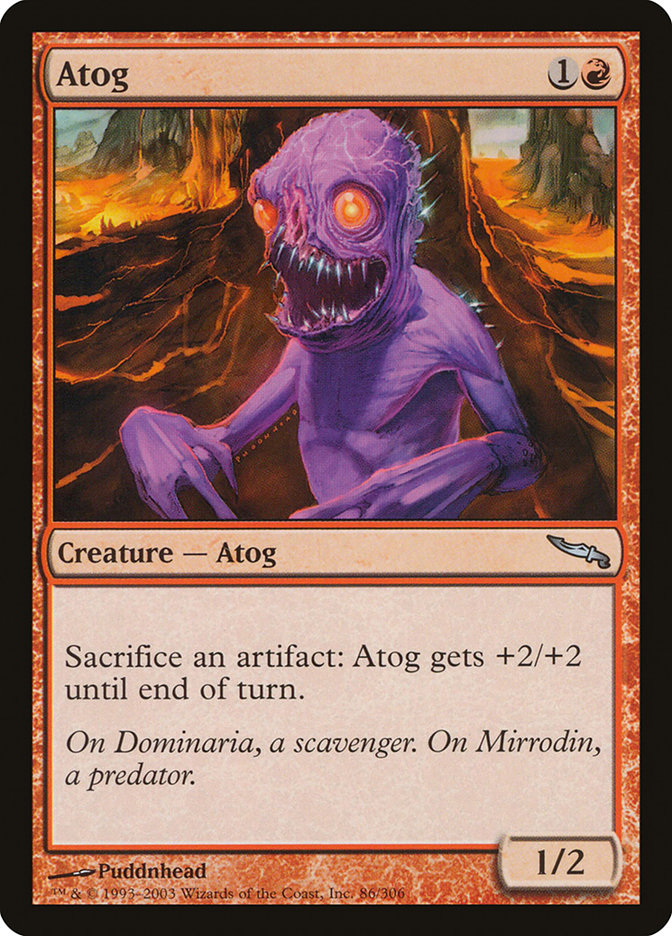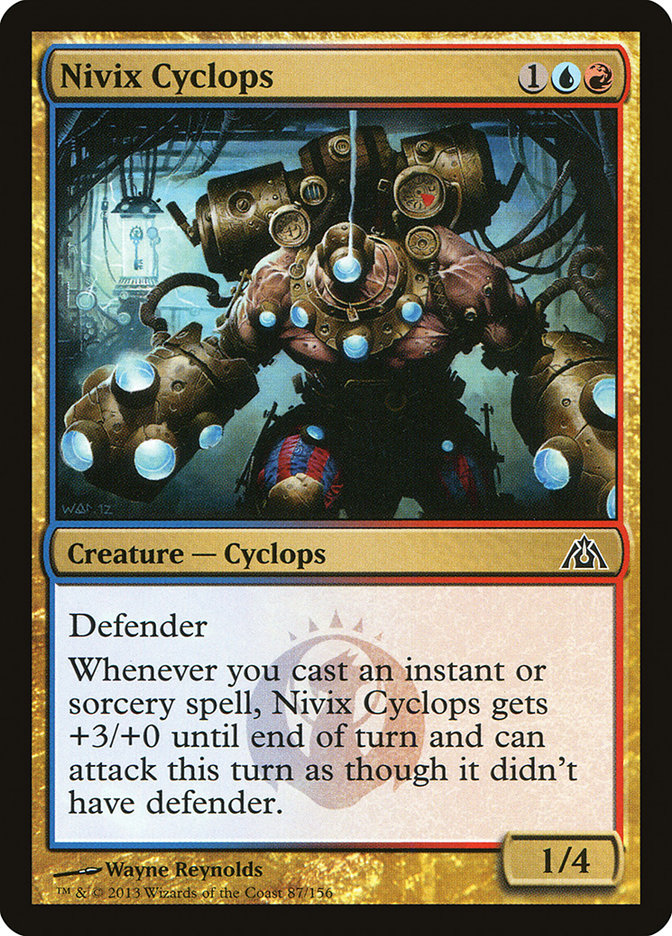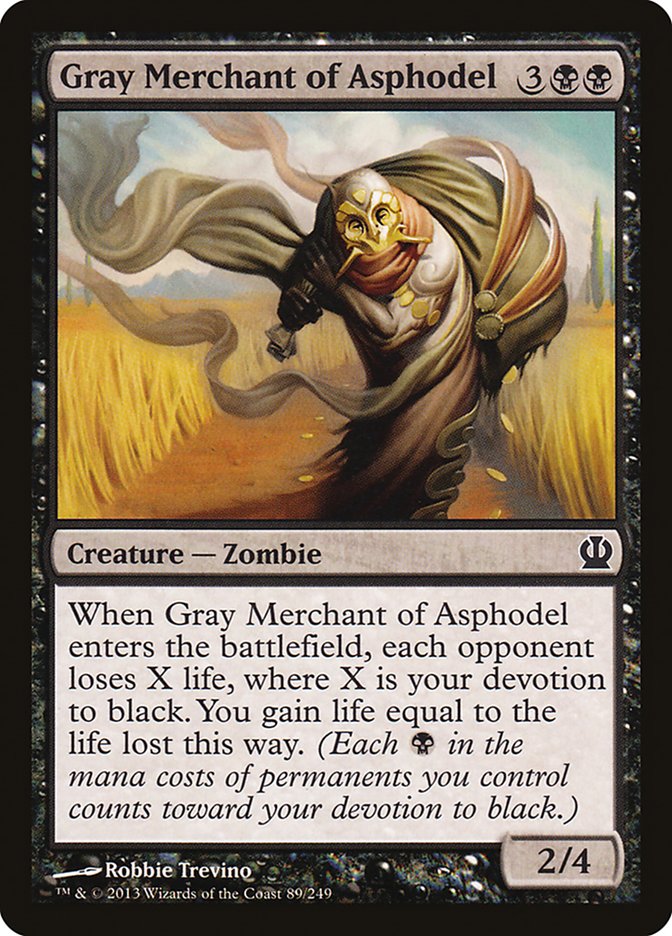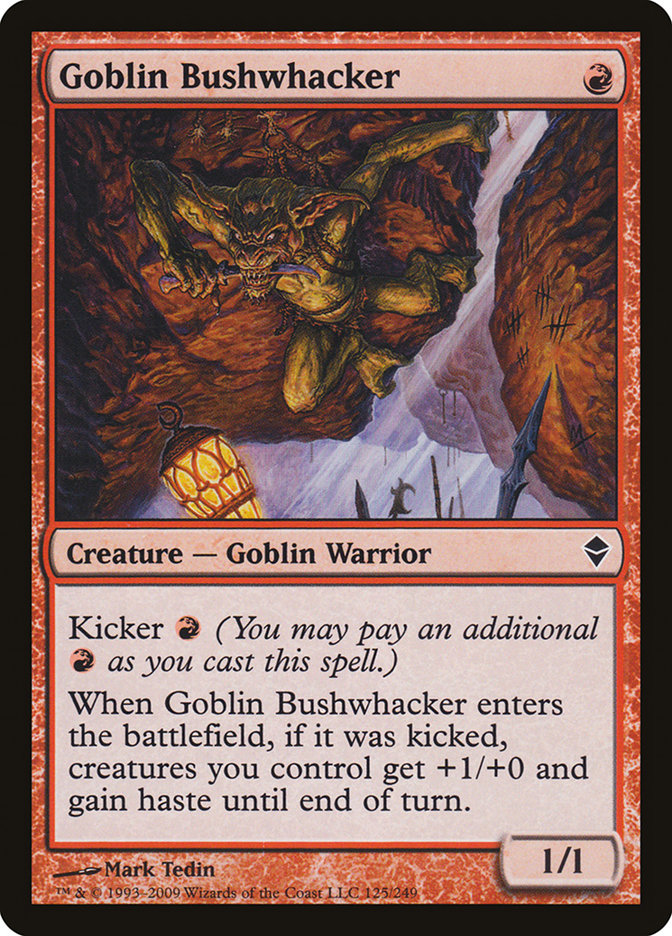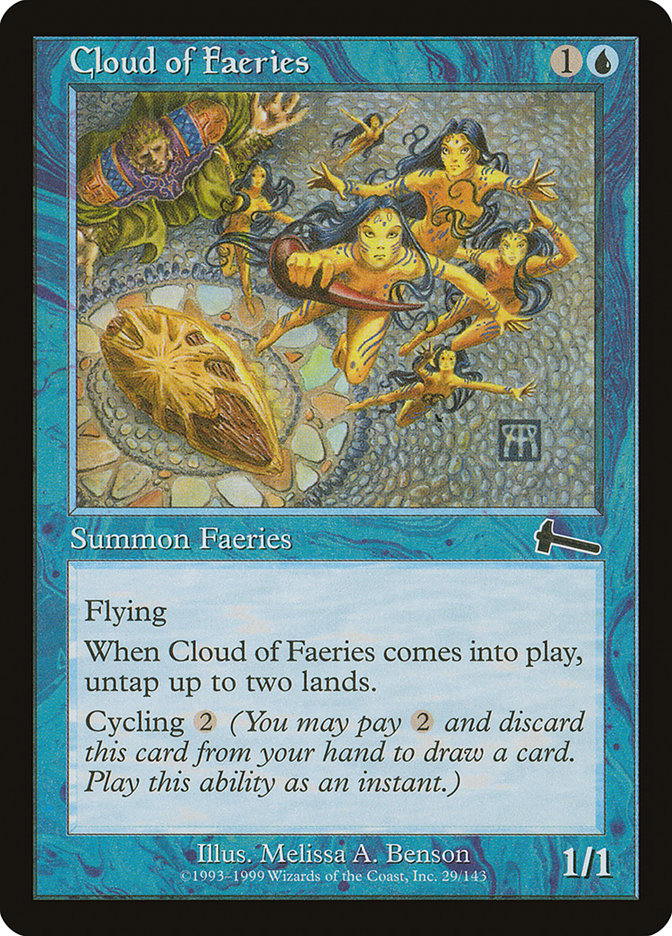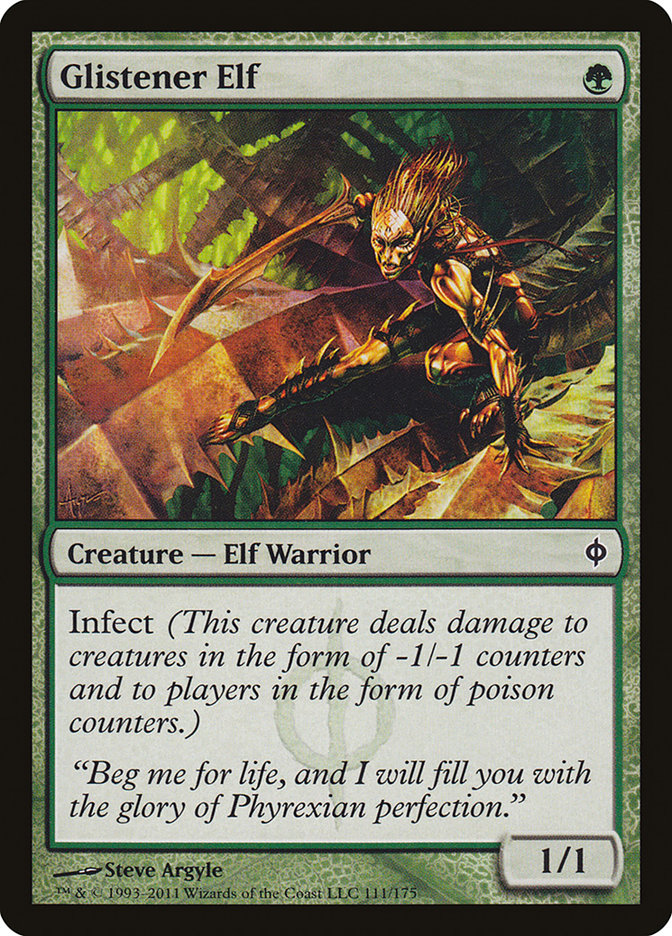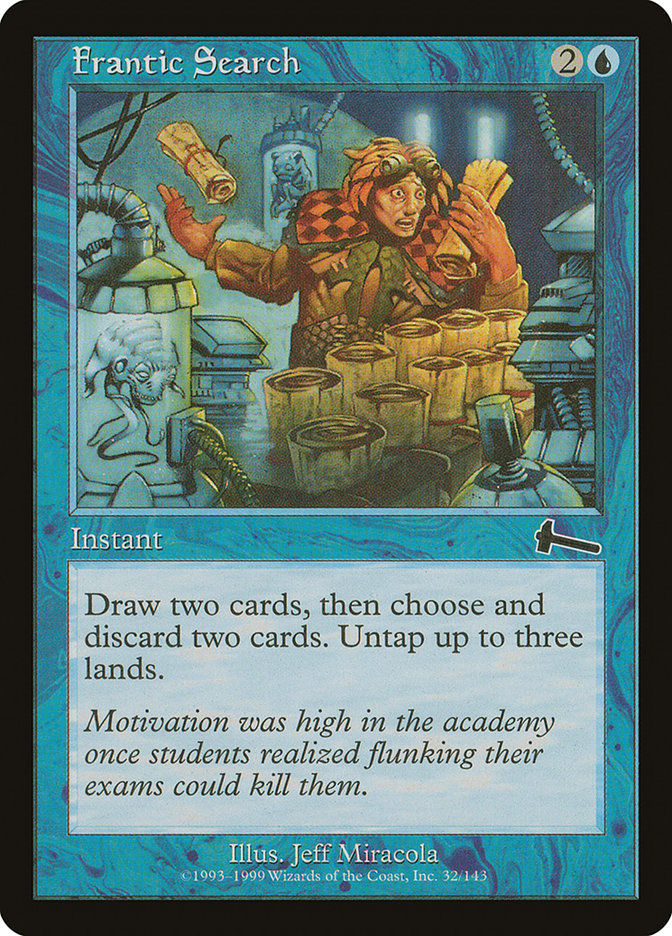By the time this is published, I will be two days away from my 30th birthday. I have been playing Magic for nearly twenty of those years and Pauper for eight (back when it was still a player-run format). Despite the removal of Daily Events, Pauper remains a healthy and diverse format, and as I have made mention in various forms of social media and content, I believe it will survive this little bump in the road.
Last week, in the wake of the announcement from Wizards that Pauper would not be getting Daily Events back at this time, I started to think about the history of the format. I am one of the longest continuously playing members of the "Pauper community" and have been around for all of the major events in Pauper’s past. I recorded a podcast on the history and potential future of Pauper and got some interesting replies from Twitter, including one from former Grapeshot Storm master Victor Jenny (also known as grapplingfarrang). Victor inquired as to the cards that had the greatest impact on Pauper at the time of their printing. After a brief discussion, I thanked him for the article topic and started to compile a list.
I gave myself some additional parameters. I only wanted to look at impact on sanctioned Pauper, so sets from Zendikar forward and the "classic" blocks of Tempest, Urza’s, and Mercadian Masques. Why not pre-sanctioned Pauper? Frankly, because that format was not very competitive and many great decks (including a potent Storm combo deck) went unbuilt. With prizes on the line, the desire to win became far greater. Even though Zendikar and Tempest arrived shortly before the recognition of Pauper, the few weeks between was short enough to warrant their inclusion. This also prevents the inclusion of cards like Rancor and Daze, both of which had a profound impact but were released in Duel Decks before their original set came out online.
These cards are ranked by their immediate and lasting impact on the Pauper landscape. This is the history according to me, so if you feel I left a card out or am incorrect in my list sound off in the comments—I’d love to hear from you!
First off, some honorable mentions:
The Guildgates: I would be lying if I didn’t say I had high hopes for these cards. These cards give Pauper the best possible dual lands so far at the cost of entering the battlefield tapped. This tempo hit has proven a hurdle that is too great for these lands to overcome en masse. Some have seen play, notably Izzet Guildgate in pre-ban Izzet Post decks and Izzet Blitz currently. By and large, however, these lands have been a disappointment but remain an important deckbuilding option.
Delver of Secrets: So here’s the thing—this card isn’t in my Top 10. It didn’t even make my Top 15. Blasphemy. The release of Delver of Secrets definitely encouraged people to play more blue decks, but the lists were largely similar before and after the printing of Delver of Secrets. What changed? The amount of people upset that blue got an insanely offensive one-drop and the number of Spikes running the little Insect Wizard that could.
Drum roll please . . .
10. Ghostly Flicker: The surface has only been scratched with this card. While it was overshadowed by certain other cards in the appropriate combo deck (Temporal Fissure and other cards listed below), Ghostly Flicker has definitely made its presence felt in Pauper. Even with Temporal Fissure out of the way this card is still part of the premier combo deck in the format, working with Mnemonic Wall and Cloud of Faeries to mill out adversaries with Sage’s Row Denizen. In current builds of Dimir Control, it combines with Mnemonic Wall and Chittering Rats to lock an opponent out of draw steps.
Decks now have to be prepared for incidental graveyard interactions. Ghostly Flicker works best when combined with Izzet Chronarch and friends and starts getting abusive when this cycle repeats itself. Since at some point the Avacyn Restored standout has to reside in the graveyard, it makes sense for decks to adapt with Nihil Spellbomb or Relic of Progenitus. Currently the incentive to do this is not high enough (Ghostly Flicker decks make up a fraction of the winner’s metagame) so Ghostly Flicker decks can continue to snipe wins.
Best buddies with Mnemonic Wall and Archaeomancer, I predict that Ghostly Flicker will be a staple card in the format for years to come or at least as long as they continue to print creatures with interesting abilities upon being summoned.
Creatures (21)
- 4 Cloud of Faeries
- 4 Sunscape Familiar
- 3 Nightscape Familiar
- 4 Mulldrifter
- 2 Mnemonic Wall
- 3 Sea Gate Oracle
- 1 Sage's Row Denizen
Lands (21)
Spells (18)
Sideboard

9. Carapace Forger & 8. Atog: Separately, these cards would have made Affinity into a top-tier deck. Combined (despite the time lapse in their release), they helped to make the machine one of the premier decks in the format (as in you must prepare for Affinity or prepare to fail). Let’s look at them in isolation. Carapace Forger provides an undercosted body to go arm in arm with Myr Enforcer. The Mirrodin block standby was and remains a fantastic inclusion in Affinity. Alone, Myr Enforcer leaves much to be desired since it is doubly vulnerable (being both an artifact and a creature). While some lists ran Quicksilver Behemoth, the constant recasting could become cumbersome and rarely could be stranded in hand.
Carapace Forger instead provides an Enforcer-sized body as early as turn 2. This helped to speed up Affinity by a full turn and provided a threat that does not die to commonly occurring hate (Ancient Grudge, Kor Sanctifiers, Smash to Smithereens). Carapace Forger and Myr Enforcer are the late 80s rap duo of Pauper: big times and easy rhymes.
Atog, on the other hand, is the advent of early 90s West Coast rap. It is in your face and changes the game entirely. The release of Atog as a common in Master’s Edition IV gave Affinity a lightning-quick combo kill. After being attacked by mechanical frogs and armored elves, Atog can provide a one-shot kill when combined with Fling. This gives the machine menace and additional deadly angle of attack. Suddenly packing a decent amount of artifact hate was not enough, as it was simply fuel for the anagram goat.
So what have these cards done to the Pauper landscape? Affinity is a top contender and is one of the more powerful options in the format. It is a deck that must be respected when it comes to choosing a weapon. More than this it has diversified the threats available, forcing some number of regular creature kill spells to remain in decks in games 2 and 3. Gorilla Shaman is more important than ever in keeping both Atog and Carapace Forger under control. Dead Weight has become a premier removal spell thanks its ability to kill Atog dead.
Creatures (16)
Lands (17)
Spells (27)
- 4 Thoughtcast
- 2 Fling
- 4 Perilous Research
- 4 Chromatic Star
- 4 Springleaf Drum
- 2 Prophetic Prism
- 4 Galvanic Blast
- 3 Ichor Wellspring
Sideboard

7. Nivix Cyclops: Clocking in at number seven is the card that put Kiln Fiend and Delver of Secrets together for awesome fun-time parties. While the two-color spell-based aggro deck had long existed on the back of Wee Dragonauts, Nivix Cyclops pushed it to the forefront of the Pauper metagame. Nivix Cyclops provided a better blocker with built-in Lightning Bolt resistance. Considering the alpha boon could kill every card in this deck previously, this was a pretty huge upgrade. The Horned Turtle aspect of Nivix Cyclops cannot be understated. The natural power of most Pauper creatures does not exceed three, and a Cyclops can do a good job of absorbing blows and occasionally taking out attackers with well-timed instants.
While Nivix Cyclops itself has only increased the need for no-holds-barred removal like Doom Blade, the popularity of this deck has increased the presence of Dead Weight to help handle Kiln Fiend. Combined with the ubiquity of Affinity it is a bad time to be a natural two-toughness creature.
6. Gray Merchant of Asphodel: The latest addition to this list, Gary is quite the card. Mono-Black Control has been a Pauper staple since long before the format was officially recognized. In the months leading up to Theros the deck had experienced a resurgence largely on the back of Unearth and Chittering Rats. Gone were the game-ending Corrupts, replaced with an attrition monster of Chittering Rats, Phyrexian Ragers, Unearths, and excellent removal.
Then Gray Merchant of Asphodel was release, and everything changed.
Now Mono-Black Control is far more reminiscent of the Corrupt decks of days gone by. Chittering Rats is no longer a back breaker in its own right but is instead the step ladder to the slam dunk of Gray Merchant of Asphodel. Gary, as he is affectionately called, has also changed the removal suite to include Oubliette, which contributes to devotion (while also being bugged to permanently exile the offending creature). Gray Merchant of Asphodel has pushed MBC back toward running some number of Corrupts to help close out the game. Unearth is no longer popular since MBC’s curve goes well past three at this point. Instead of gnawing at life totals, MBC now ends the game with haymakers.
This has opened the door for resilient aggro, like White Weenie, to worm their way back into the metagame. Without the persistent removal of Rats-based MBC, creatures are viable again—at least until Gary hits the board. The four butt on the Merchant also has increased the utility of Bonesplitter, so it’s a good idea to be prepared for the axe.
5. Goblin Bushwhacker: It has been a while, but Goblin Bushwhacker was one of the first cards to alter the Pauper landscape. Upon its release it went right into two decks: the eponymous Goblins and Storm. The former seems obvious; Goblin Bushwhacker not only pumps the army but also plays nice on tribe and gives the deck a win from nowhere quality. This combined with Mogg Raider (in the face of Tendrils of Corruption) helped to make Goblins the best deck in a field flooded with Mono-Black Control. The release of Bushwhacker and Mogg Raider in a short span of time propelled Goblins to "best deck" status in early 2010.
If that was all this little guy did, it would be enough to earn a spot in the Top 25, but Top 10?
Meh.
Goblin Bushwhacker earned this spot on the back of its role in Storm. Combining with Empty the Warrens is when Goblin Bushwhacker really took the spotlight. Storm decks could always Grapeshot for twenty, but Empty the Warrens only required a storm count of ten to generate a lethal board state. This is all well and good until someone cast an Echoing Decay to ruin the day. But with Goblin Bushwhacker, man, you could get away with five copies and win on the spot against an empty board. This was easily attainable.
Goblin Bushwhacker influenced the metagame from two angles. In response to Goblins, cards that gained life grew popular, and White Weenie saw an uptick in the number of pilots. Storm forced decks to include answers to both Empty the Warrens and a way to try to fight Grapeshot. This would help lead to Storm’s successive presence in the winner’s metagame since picking the incorrect sideboard cards would spell a death knell.
Since the removal of Empty the Warrens from the metagame, Goblin Bushwhacker still sees play in the deck of its tribe, but there was a time when that card instilled true fear. Now it’s simply something swell.
Creatures (35)
- 4 Goblin Cohort
- 4 Mogg Flunkies
- 2 Sparksmith
- 4 Mogg Raider
- 4 Goblin Sledder
- 4 Mogg Conscripts
- 4 Mogg War Marshal
- 1 Hissing Iguanar
- 4 Goblin Bushwhacker
- 4 Goblin Arsonist
Lands (17)
- 17 Mountain
Spells (8)
Sideboard

Creatures (2)
Lands (12)
Spells (46)
- 2 Cabal Ritual
- 2 Duress
- 4 Dark Ritual
- 1 Chromatic Sphere
- 4 Lotus Petal
- 2 Ideas Unbound
- 1 Compulsive Research
- 4 Rite of Flame
- 4 Chromatic Star
- 4 Empty the Warrens
- 4 Grapeshot
- 4 Ponder
- 4 Manamorphose
- 2 Sign in Blood
- 4 Gitaxian Probe
Sideboard

4. Cloud of Faeries: The current leader for "most broken card" legal in Pauper, Cloud of Faeries does so much work. When combined with the number ten card on this list, Cloud of Faeries helps to create game-ending kills and enables all sorts of shenanigans. But since I already covered that before, I’m going to talk about the other thing Cloud of Faeries did.
Delver Blue operates largely on the threat of counters. Spellstutter Sprite is such a huge tempo play out of that deck—counter your spell, oh look I have a creature ready to attack—but has the liability of hitting one-drops early. With Cloud of Faeries Delver players could cast their two-drop against nonblue decks without fear of actually investing mana. Now thanks to the tribal goodies of Lorwyn, Spellstutter Sprite hits the ones and twos, and there are more threats for the blue player and even fewer for the enemy.
What does this mean for opposing decks? Creatures that could deal with 1/1s that also cost one were suddenly in high demand. Icatian Javelineers, Fume Spitter, and Scattershot Archer saw increased time in maindecks and sideboards as a way to neuter the efficacy of the Cloud of Faeries / Spellstutter Sprite tag team. This remains an important component of Pauper deck design today.
Creatures (22)
- 4 Ninja of the Deep Hours
- 4 Cloud of Faeries
- 3 Spire Golem
- 4 Spellstutter Sprite
- 3 Phantasmal Bear
- 4 Delver of Secrets
Lands (19)

3. Glimmerpost: Let’s print another Locus they said. Let’s make it gain life they said. This can’t end badly.
Oh wait.
As I discussed back in September, the Cloudpost engine was one of the most degenerate things a player could do in Pauper. Glimmerpost itself was not the offending card but helped to enable Cloudpost decks to make tons of mana and do stupid things, like bounce all opposing permanents with Temporal Fissure. This created a metagame where you either had to win before Temporal Fissure could resolve or try to ignore the deck with hexproof.
Glimmerpost also spawned one of the more dominant control decks in Pauper’s history in Izzet Post, forcing out all other options for the more meticulous player. Things got so bad that decks started to run Raze as a way to try to steal some of the tempo back from the Locus players. Thankfully, Wizards saw the light and excised Cloudpost from the list of legal cards. But the printing of Glimmerpost and the subsequent decks definitely merits the number three spot.
Creatures (15)
Lands (21)
Spells (24)
- 3 Temporal Fissure
- 4 Snap
- 2 Compulsive Research
- 4 Expedition Map
- 4 Prophetic Prism
- 4 Preordain
- 3 Ghostly Flicker
Sideboard

Creatures (8)
Lands (24)
Spells (28)
- 1 Rolling Thunder
- 1 Capsize
- 1 Serrated Arrows
- 3 Condescend
- 3 Prohibit
- 1 Deep Analysis
- 3 Mystical Teachings
- 4 Ponder
- 1 Magma Spray
- 1 Burst Lightning
- 3 Flame Slash
- 3 Prophetic Prism
- 1 Ghostly Flicker
- 2 Electrickery
Sideboard

2. Glistener Elf: A 1/1? Really? Well, it wasn’t Glistener Elf that was the problem; it was Invigorate. However, Invigorate had been legal for years before Glistener Elf saw print. The presence of a one-drop with infect combined with potent two-drops—Blight Mamba and Ichorclaw Myr—and Lotus Petal helped turn Infect into a consistent turn 2 kill.
This changed everything. And by everything I mean the removal people were running. Lightning Bolt was no longer good enough. Instead, cards like Curfew, Diabolic Edict, and Innocent Blood ruled the day. Fog saw more play than Moment’s Peace. Playing against Infect became a game of mulliganing into a hate card or losing on the spot. While Invigorate was the true offender (and was banned for the trouble), it was the introduction of Glistener Elf that made us all sick for months.
Creatures (14)
Lands (18)
Spells (28)
- 4 Rancor
- 4 Invigorate
- 2 Lotus Petal
- 4 Vines of Vastwood
- 4 Groundswell
- 4 Mutagenic Growth
- 2 Apostle's Blessing
- 4 Gitaxian Probe
Sideboard

1. Frantic Search: What else can be said about this card that I haven’t said before? In the right deck this card could generate eleven mana by itself while also filtering to two new cards. Combined with cards like Simic Growth Chamber and Sunscape Familiar Frantic Search was able to blow the game wide open as early as turn 2. Before Mono-Blue Post Storm, before Sage’s Row Denizen Combo, Frantic Search divided the metagame in half—be this deck or die to it. Stone Rain became the law of the land, and Mono-Green Post became a legitimate deck mostly due to its ability to keep Frantic Storm in check.
Frantic Search wasn’t just a card—it was a seismic event in Pauper. Not only did it alter the metagame, but Wizards’ banning of it gave a clear signal of what they wanted Pauper to be. They wanted to foster interactive play. We see more of this in later bans (Invigorate, Empty the Warrens, Grapeshot, Temporal Fissure), but Frantic Search was the vanguard of them all. And we should have known since it is banned in Legacy.
Creatures (19)
- 4 Cloud of Faeries
- 4 Sunscape Familiar
- 4 Nightscape Familiar
- 4 Mulldrifter
- 1 Mnemonic Wall
- 2 Sea Gate Oracle
Lands (22)
Spells (19)

So there you have it—my take on the ten most important releases for sanctioned Pauper. I have been involved in the format for eight years, and I look forward to playing it well into my thirties and hopefully beyond.
For those of you who are interested, here are cards 20-11 in order:
20. Tortured Existence
19. Unearth
18. Squadron Hawk
17. Predatory Sliver
16. Delver of Secrets
15. Frostburn Weird
14. Priest of Titania
13. Lotus Petal
12. Mogg Raider
11. Electrickery
Do you think I left something off? Let me know! Until then, happy birthday to me, and a happy new year to all of you!
Keep slingin’ commons-
-Alex
SpikeBoyM on Magic Online
https://www.facebook.com/nerdtothecore
Check out Common Cause on iTunes!
Discuss Pauper on Twitter using #MTGPauper

